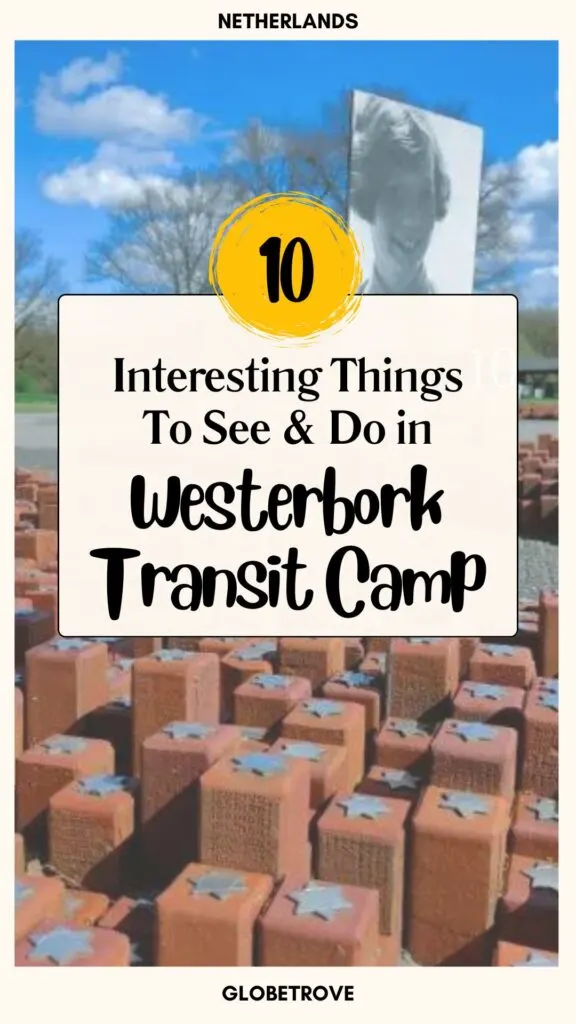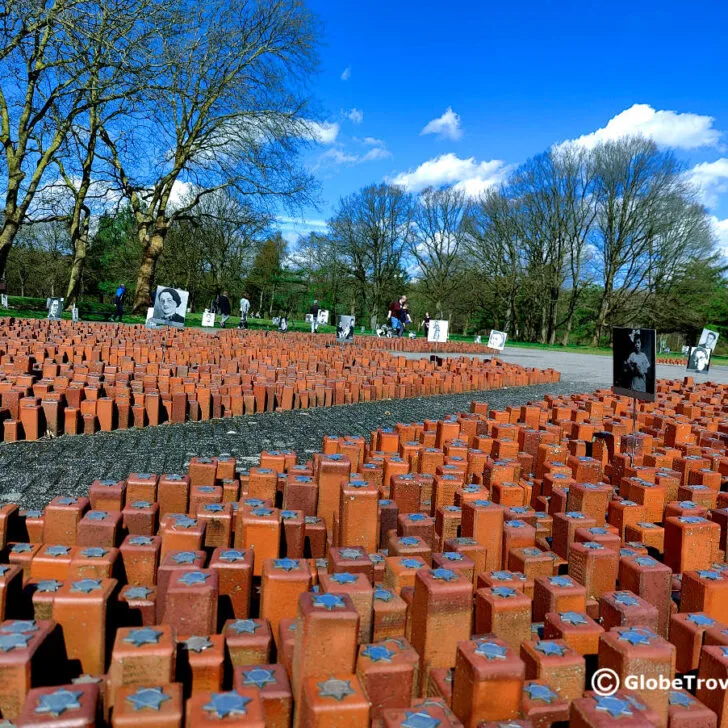Westerbork Transit camp or Kamp Westerbork is not quite well known. Most people who come to the Netherlands mostly head to Anne Frank’s house in Amsterdam. Yet this camp was where Anne Frank and over 100,000 Jews, Roma and Sinti were sent to. From here they were then deported to concentration camps.
Kamp Westerbork seemed like a pretty normal place from the outside. Aside from the barbed wire fence that surrounded it. It had a school, games, etc. When the camp was initially built it was supposed to be a refugee camp. It later became known as the gateway to hell because it served as a transit stop for people before they went to the concentration camps.
On the surface, the camp may have resembled a village with all the activity. It however was far from the truth because the people who lived here passed through quickly. They barely lived here for more than two weeks. Only people with money or influence were able to stay for longer and even then nothing was certain.
This post may contain affiliate links. As an Amazon Associate, I earn a small commission from qualifying purchases at no additional cost to you. Read my disclaimer for further information.
Table of Contents
Getting To Westerbork Transit Camp
Getting to Kamp Westerbork can pose a challenge especially if you don’t have a car. The closest train station is Beilen. Generally people who are headed to Westerbork from Amsterdam would need to catch a train from Amsterdam Central station and get off at Beilen station. From there you then need to catch a bus to Hooghalen. It is then a 2 kilometer walk from there.
Take A Tour
⭐️ Rating: 5/5 (6 Reviews) Price: $380 for 2 people (price changes depending on group size) Duration: 9 hours 📍Meeting Point: Victorieplein Details: Read more on Viator!
If renting a car is not an option and you really don’t want the hassle of going so far by train then the other alternative is to take a tour to Kamp Westerbork. Since it is not extremely well known, you will find that there are few options available. One of the tours that I found that leaves from Amsterdam combines three iconic spots along the way: Westerbork transit camp, Afsluitdijk Wadden Center and Nationaal Monument Kamp Amersfoort.
Its a whole day trip so you need to allot 9+ hours for this trip but its well worth it. You’ll meet up with your tour guide at 8:30 am at Victorieplein in Amsterdam. From there you will head to Kamp Westerbork where you will go around the camp and learn about how Anne Frank and over 100,000 lived here before they were transported to concentration camps.
After this, you will then have a pit stop at the Afsluitdijk Wadden Center. This gorgeous building is designed to look like it is rising up from the sea like seafoam. It is a great place to click photograph and explore.
Here you will get a chance to take a short break and stretch your legs. Don’t forget to take a peak at the hydraulic engineering that makes this spot famous.
“My experience was great it was everything I imagined and more.
I learned a lot about Westerbork Transit Kamp and Amersfoort Kamp when we visited them I found them both very touching Martin also took the time to show me Anne Franks neighborhood where she lived before going into hiding, where she went to school her statue which I found all very interesting.
I just want to thank Martin for a great day he was an excellent tour guide, he picked me up where I was staying in Amsterdam and dropped me off I’m hoping to book another tour with Martin soon to further my journey.”
Leanne (read more reviews now!)
The last stop on the way is the Nationaal Monument Kamp Amersfoort. Originally a spot for the Dutch barracks, this spot was taken over by the Nazis and converted into a concentration camp. Here you can see the horrible conditions in which people were kept. It was a place where hunger and despair prevailed. Forced labor was the norm and executions were common.
Westerbork Transit Camp
Your visit to Kamp Westerbork will be divided into three sections. The short film documentary which is in either English or Dutch, the temporary exhibit and a visit to the actual site. I would recommend starting off with the short film because that will help you understand everything that you see afterwards.
1. Film documentary
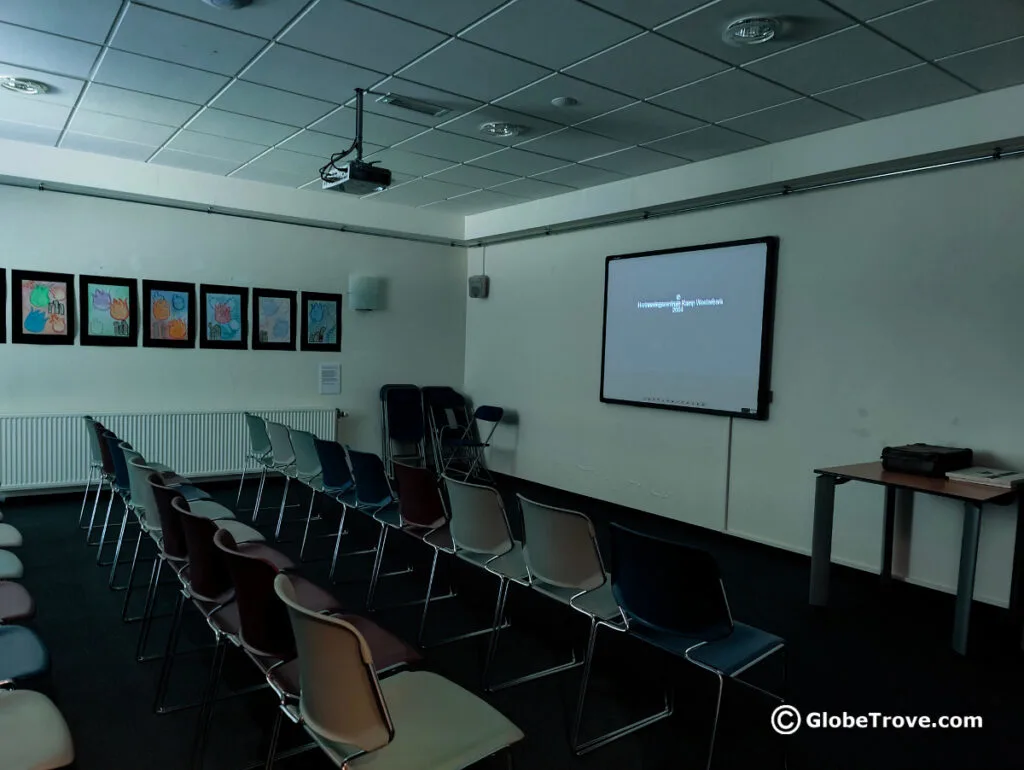
The first part of our visit was the film documentary. This is the only actual video evidence that was taken from a camp during the war. A prisoner by the name of Rudolf Breslauer compiled the film. He received this assignment from Commander Albert Gemmeker.
The film was used to portray life in Westerbork in a positive way and was shown to visiting officials at that time. Today, it is a unique opportunity to visualize life in the camp though it does not show the hardship that the prisoners faced.
2. The Temporary Exhibit
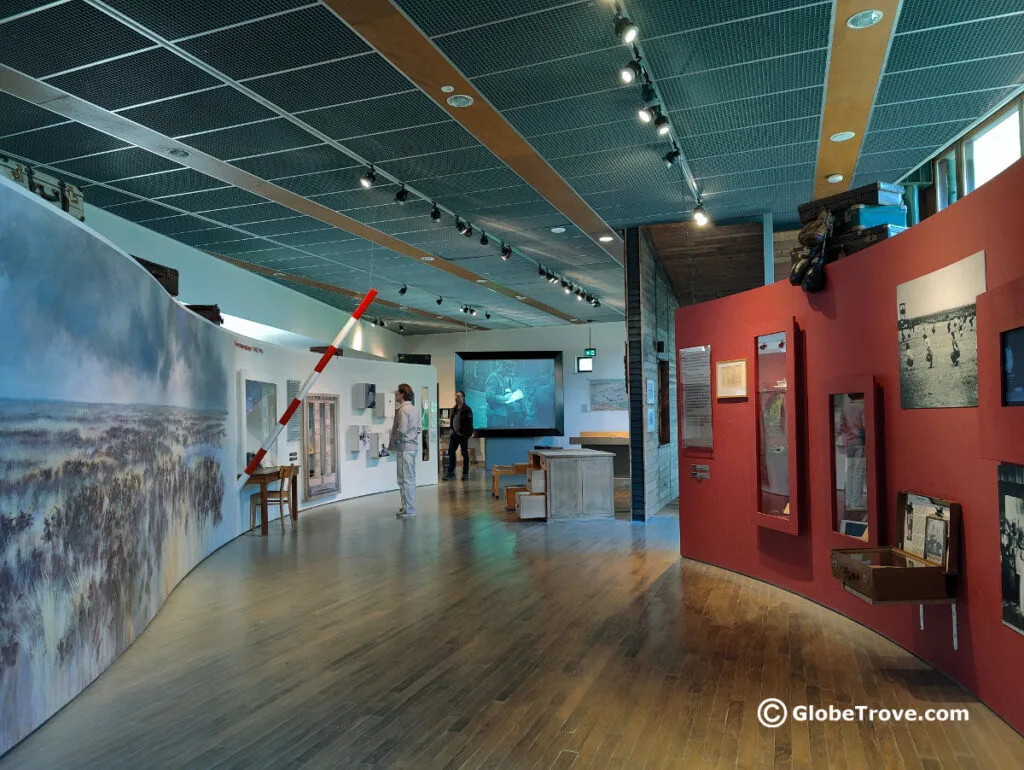
I’m not very sure if this exhibit changes or how often it does but while we were in Kamp Westerbork, the exhibit included a lot of information. Loads of photographs that were taken, and a lot of information about the people who passed through. Most of it was in Dutch but there were translations available in a booklet.
The Main Westerbork Camp
The main Westerbork transit camp is over 2 kilometers away from the main museum building. A bus stops every 20 minutes in front of the building. You can also walk on a good day.
3. The Commandant’s House
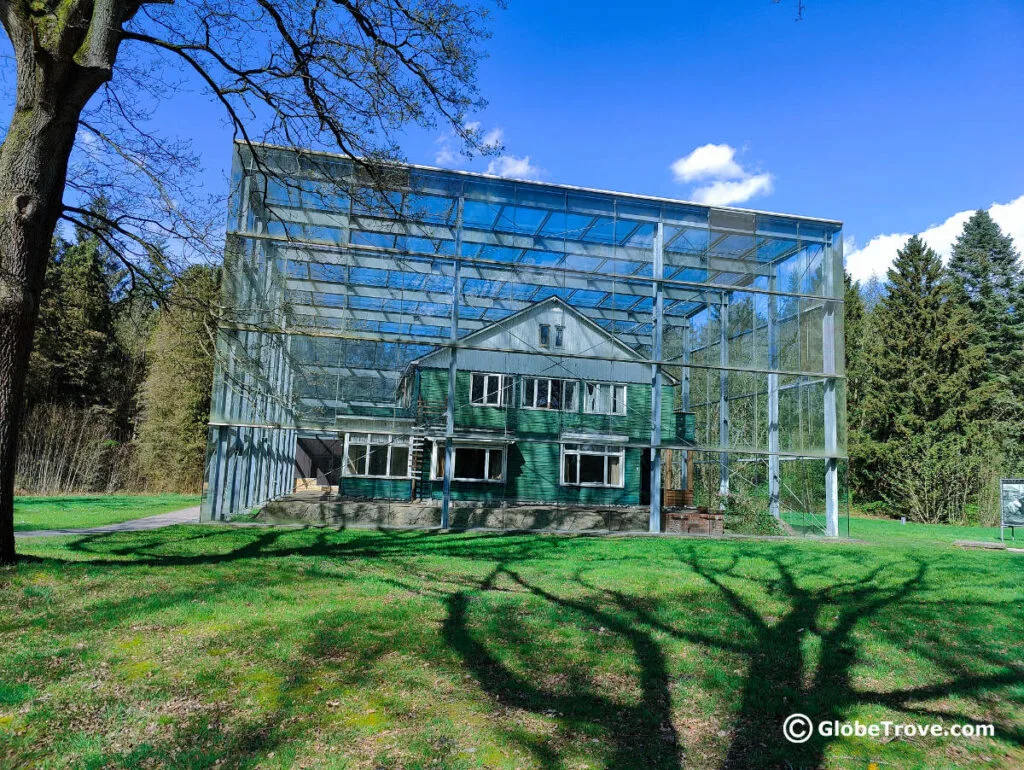
The Commandant’s house is the only structure in Westerbork transit camp that is currently still standing. It is enclosed in a glass structure to preserve it so you can’t go inside. You can however walk all around it and peer through the glass. Interestingly enough, the camp Commandant’s house was outside the camp and not inside it. One can imagine the stark difference that his life must have been compared to the people who lived on the other side of the barbed fence of the Westerbork transit camp.
4. The Entrance To The Camp
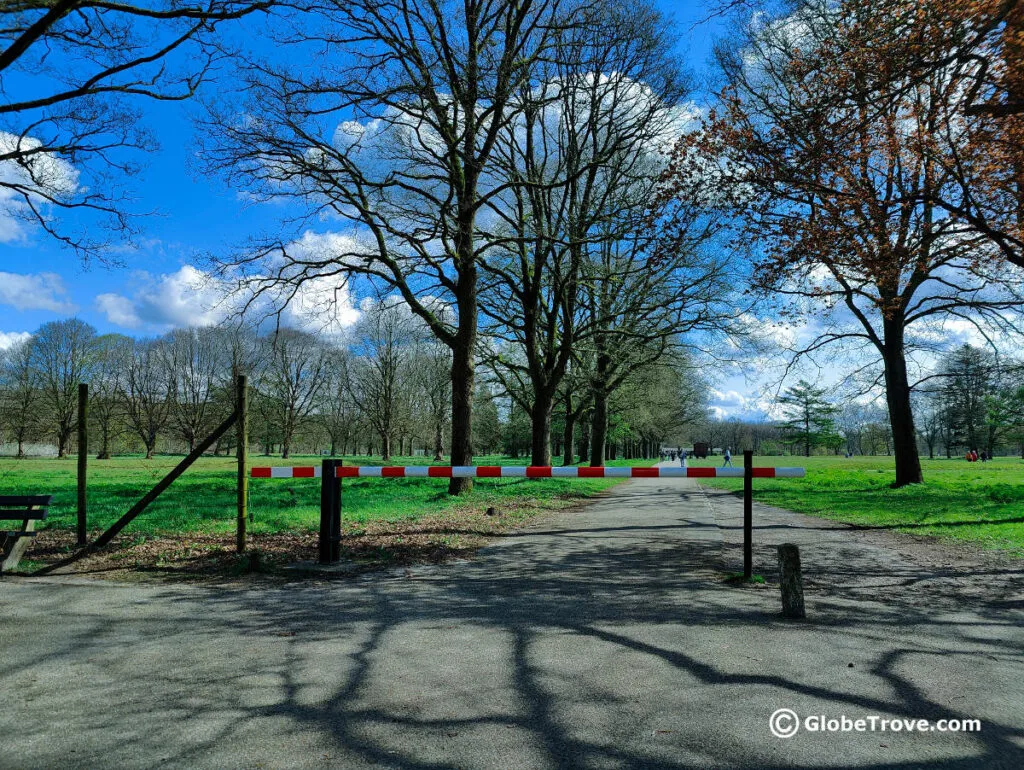
As you pass into the Kamp Westerbork, pay attention to your surroundings. One of the things that you will notice is the red and white boom barrier. You will pass under this to get into the Westerbork transit camp. If you look around, you will notice that on one side the forest terrain marks the camp boundary.
Barbed wire also ran around the complex. It has been kept here to show you just how the complex was back then. It is a poignant reminder of how trapped the people inside must have felt.
As you walk through, pay close attention to the ground on either side. You will come across raised patches of land. This is where the prisoners’ living quarters used to be. The actual barracks were dismantled but the mounds that lay beneath them still remain as a reminder of their ordeal and the horrible living conditions in which they were housed.
It is important to understand that while Westerbork transit camp provided an outsider with a glimpse of a very ideal set up, the truth was far from it. The inhabitants lived in fear for their lives, uncertainty of the future and very often lived in Westerbork transit camp for just a little more than 2 weeks at a time.
5. The Wagon
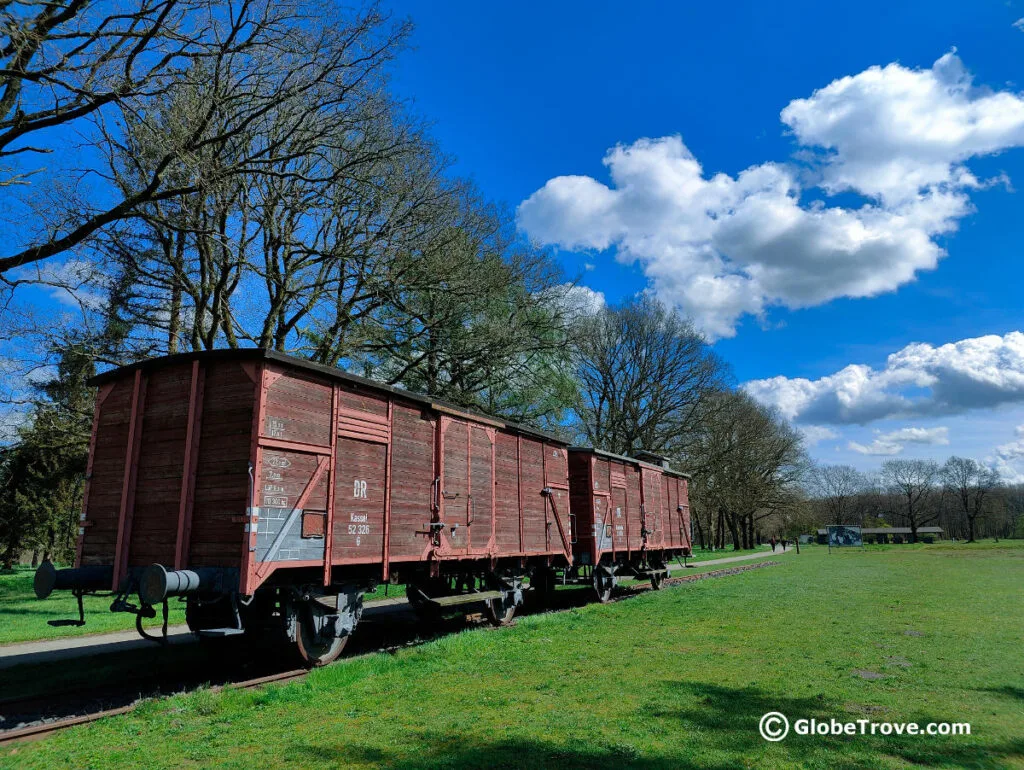
One of the things to do in Westerbork is to stop at the wagon. Wagons were used to transport people from Westerbork transit camp to concentration camps. The wagons could be 2 to 49 wagons long. It is unknown if these current wagons on display were actually used back then. They however are very similar to wagons that were used.
The asphalt road at the side of the wagon is where the prisoners were assembled. The names were announced here. If someone’s name was called they had to get ready to board a train to an unknown location. No one knew whose name would be announced in advance.
While you are standing here, you will hear a voice reciting the names of people. These are the names of the people from the Westerbork transit camp who were then transported to concentration camps. It serves as a reminder and a memory of the people who lost their lives here.
Boulevard of sorrows is the name that the residents of Kamp Westerbork gave to the place where the prisoners boarded the train. This is because boarding the train was a one way ticket to an unknown location and almost certain death. Most of the time, families were split up.
6. The 102,000 Stones
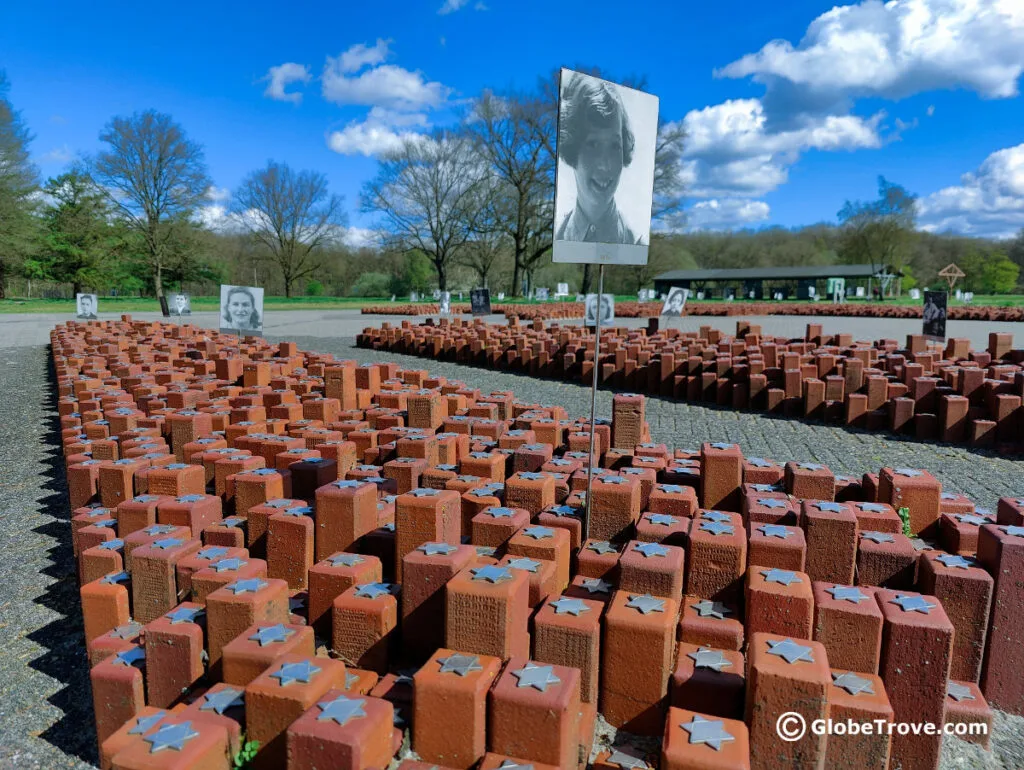
When people talk about the things to do in Westerbork transit camp, they will mention the red stones. These 102,000 stones are a memorial to the people who lived and passed through this camp. The square in which they are set up is the very same square where the camp rol call was held every day. This is where the prisoners gathered before work. This was also where people gathered for the football matches.
The redstones depict each individual that passed through Kamp Westerbork to be deported and killed. The stars on top represent the Jews. The unmarked stones depict the others. It shows that the largest number of people deported through here were Jews.
If you look at the paving around the stones you will notice that there are light and dark stones. These are used to form a map of the Netherlands and it is meant to show you that people from all over the country were deported. It is important to note that this map was before the province of Flevoland was formed.
7. Barack 56
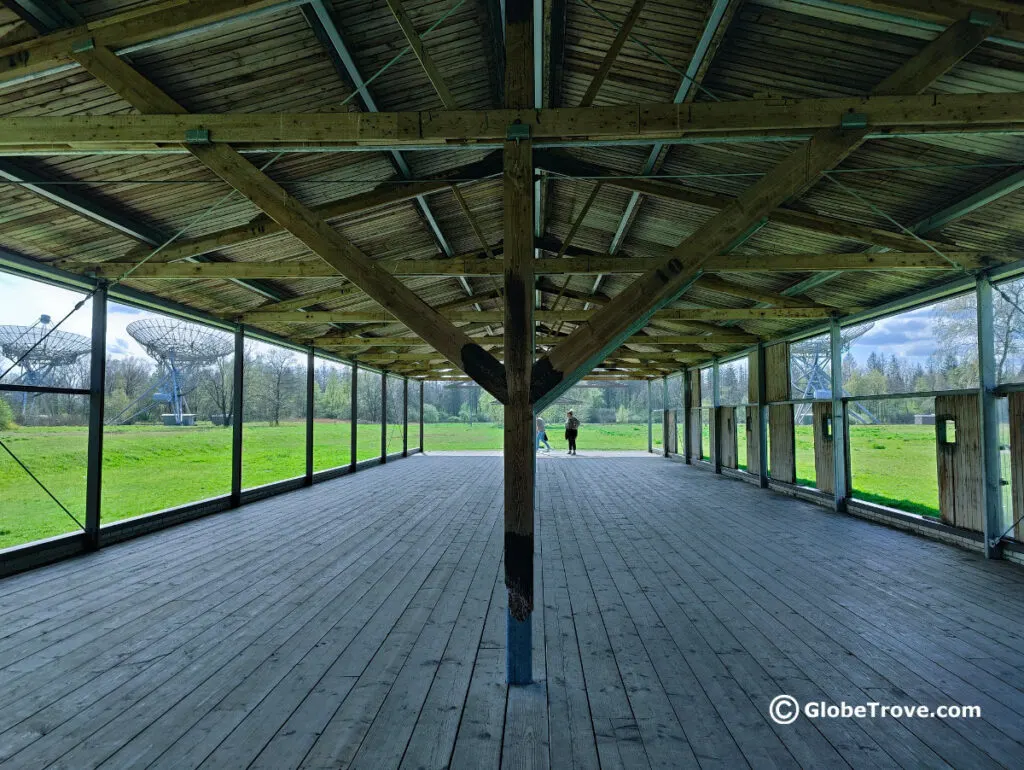
This was the main original Barack. This Barack was auctioned off to a farmer where he used it for a chicken coop. The Barack was later discovered in 2009 and returned. All the original parts are still there. The barrack had bunk beds inside. Kamp Westerbork suffered from overcrowding. One barrack could house as many as 400 people. The women and children had to make way for the elderly.
Walk inside the barrack. It may not have its original sparse furnishings but stand inside and look around. Try to imagine 400 people trying to sleep and keep warm in the structure. Living in Groningen, I can well imagine how bitterly cold the winter must have been. To have sparse heating and to live in such crowded accommodations must have been so hard.
Later on, newer barracks were constructed. These new barracks were larger and had a stove instead of central heating.
The particular barrack that you are standing in was later used as a workshop for the camp. Here they dismantled batteries.
8. Potato Cellar
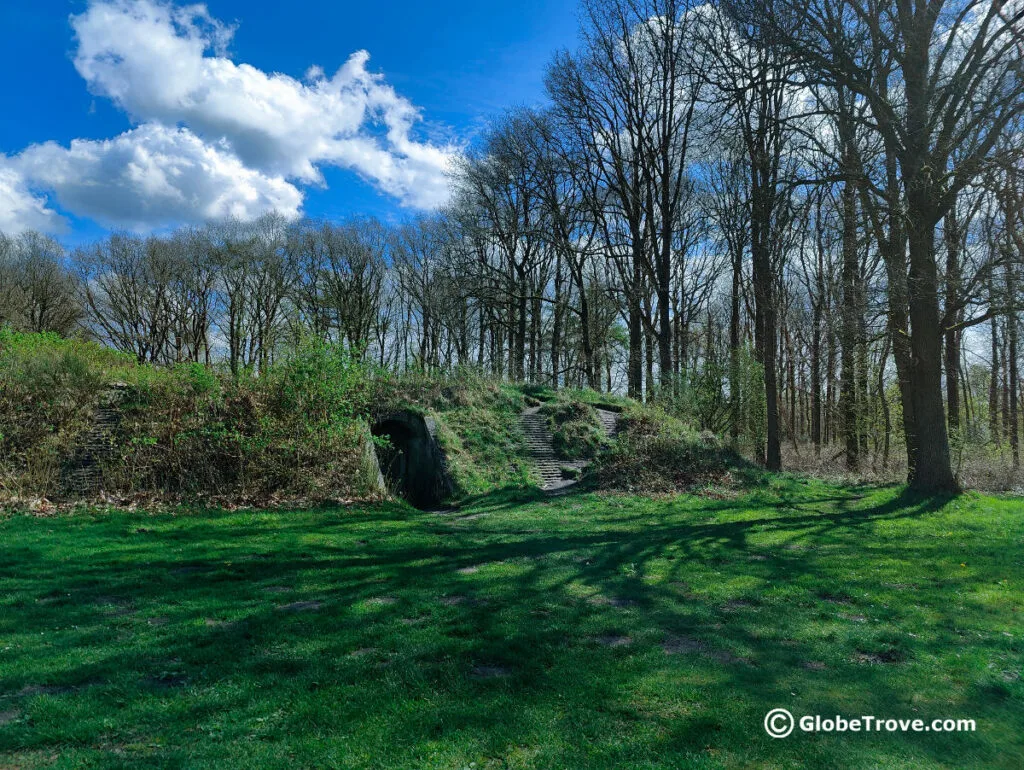
This is one of the few buildings to be preserved and is often mistaken for a bunker. Some of the potatoes were grown on the camp farm but otherwise they were bought from the local farmers.
In some days the cellar had to provide food for over 10,000 people. The cellar currently makes an ideal nesting place for bats which is why it’s no longer accessible.
9. The Railway Track Memorial
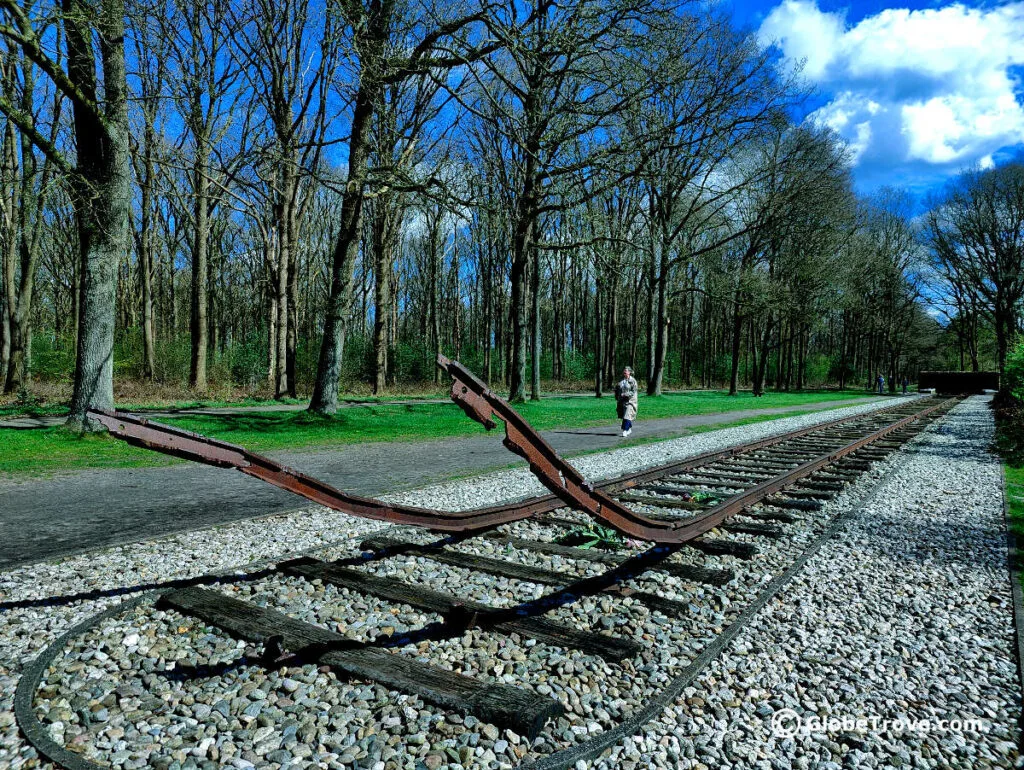
Jews who returned from hiding were often not received with open arms. Many returned to homes that were already occupied by others. People did not believe them.
A monument was built to honor their suffering. Unfortunately when the monument was first unveiled none of the survivors were invited. That’s why a second inauguration was held later that year.
The memorial has a lot of symbolism. The curved broken rails represent the people who were taken to the concentration camps to be exterminated. It is a very poignant memorial and one that will leave its imprint on you.
Another thing that you will notice is the stones. The dark stones represent the prisoners and the white ones represent the people who are free.
10. The Punishment Barracks
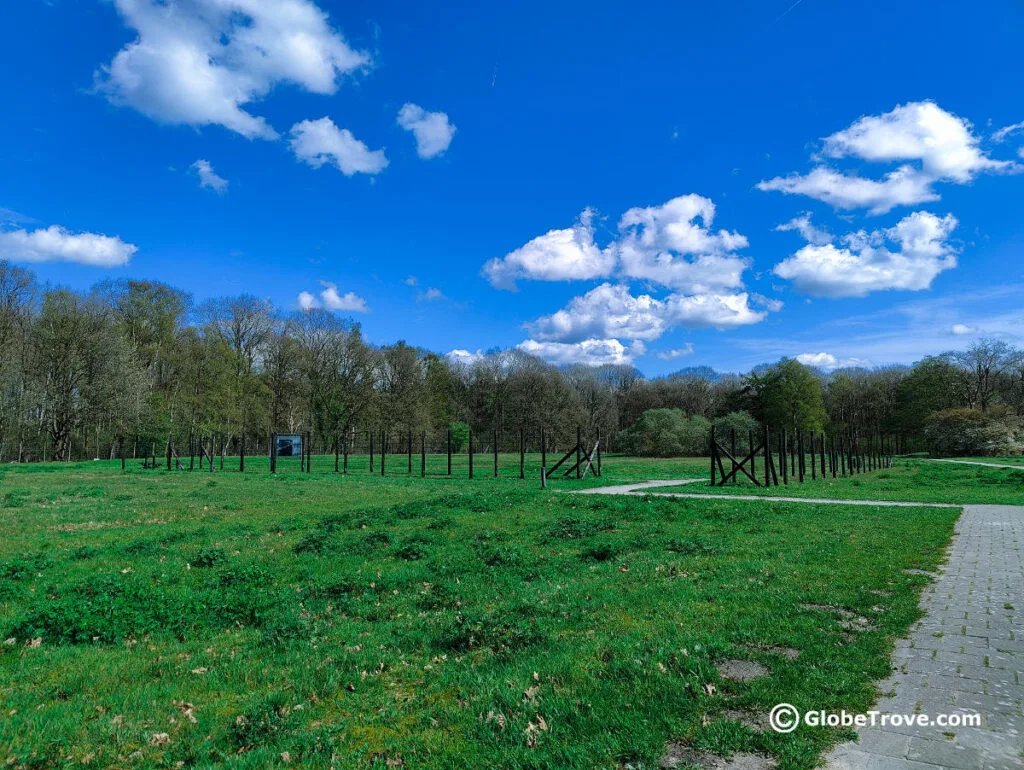
While the other prisoners were allowed to use their own clothing, the prisoners in the punishment barracks were different. They had to wear dark blue uniforms and were not allowed to interact with others. This is because they were usually people who were arrested, caught hiding or were resistance fighters.
These prisoners were always put on the next transport out and we’re given the worst jobs in the camp. Anne Frank and her family were brought here. Otto Frank, her father said that the children were relieved to interact with other people after two years in hiding. The adults however were always nervous about the impending transport to the concentration camps. Of the 8 people who lived in the Annexe only Otto Frank survived.
If you look at the section closely, you will note that the barbed wire wall is double. This was an added security measure designed to keep the prisoners in. These prisoners had no hope of extending their stay in Westerbork transit camp like the others.
Visiting Westerbork transit camp was one of the most moving experiences that you can have. It is totally worth visiting as a day trip from Amsterdam. It is a long drive but you can combine it with other iconic landmarks in the area.
Other Posts That You May Find Interesting
- Visiting Orvelte
- Cool restaurants in Groningen
- Where to stay in Amsterdam
- Crazy things to do in Amsterdam
- Interesting things to do in the Museum Square
- Amsterdam to Keukenhof: How to get to the tulips
- Amsterdam tulip tours that you should check out
- Things to do in Zaanse Schans
Don’t Forget To Pin This Post
